Reversal Candlestick Patterns
Reversal candlestick patterns are an important part of trading. But what is a reversal candlestick pattern? The article below will explain it.
Reversal candlestick patterns are an important part of a trader's toolkit. They prove valuable in crypto trading as markets can exhibit intense trend fluctuations. But what exactly is a reversal candlestick pattern, and how can one effectively utilize it? Let's explore these aspects together through the article below.
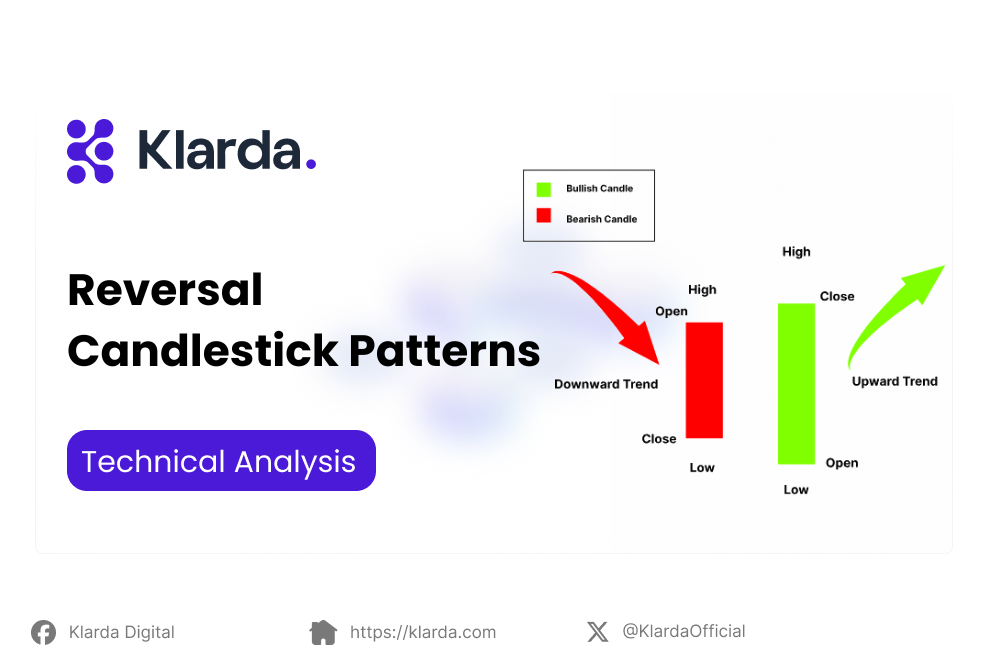
KEY TAKEAWAYS
- A reversal candle pattern is a tool that allows you to predict whether the market trend is likely to reverse, identifying potential tops and bottoms of a trend.
- Reversal patterns signal a trend change, unlike continuation patterns that indicate the trend will likely persist after a pause and confirmed breakout.
- In crypto, reversal candlestick patterns come in two types: Bullish Reversal and Bearish Reversal patterns.
When recognizing the structure of a reversal candle, traders should assess the strength of the signal.
WHAT IS A REVERSAL CANDLESTICK PATTERN?
The crypto market is a highly volatile market, devoid of any fixed trend. Price trends represent the trading psychology of the market at that particular moment, leading to moments of both upward and downward trends.
A reversal candle pattern is a tool that allows you to predict whether the market trend will reverse, identifying potential tops and bottoms of the trend. Additionally, it helps you determine when to enter or exit a trade more accurately.

A reversal candle pattern predicts market trend reversals, indicating potential tops and bottoms.
WHAT REVERSAL PATTERNS SHOW US?
According to reversal candlestick pattern pdf titled "Predictive Power of Candlestick in Malaysia: Reversal versus Continuation Patterns" by Chee-Ling Chin, Mohamad Jais, and Sophee Sulong Balia, reversal patterns differ from continuation candlestick patterns.
While continuation patterns suggest the existing trend will likely persist after a brief pause and confirmed breakout, reversal patterns indicate an imminent change in the trend direction. Reversal patterns take more time to form than continuation formations, as it's easier for the market to continue in the same direction than to change course.
For instance, successful selling pressure may exhaust the sellers, providing an opportunity for buyers to initiate a trend change, allowing traders to start a new trade. Reversals require a prior trend for initiation; a sideways market cannot be considered a reversal.
The trend change often begins with a breakout, typically from a strong resistance/support level, but there are preceding signs signaling an impending change in trend direction. As trends weaken, patterns like head and shoulders or double bottoms may emerge, indicating a shift in the trend.
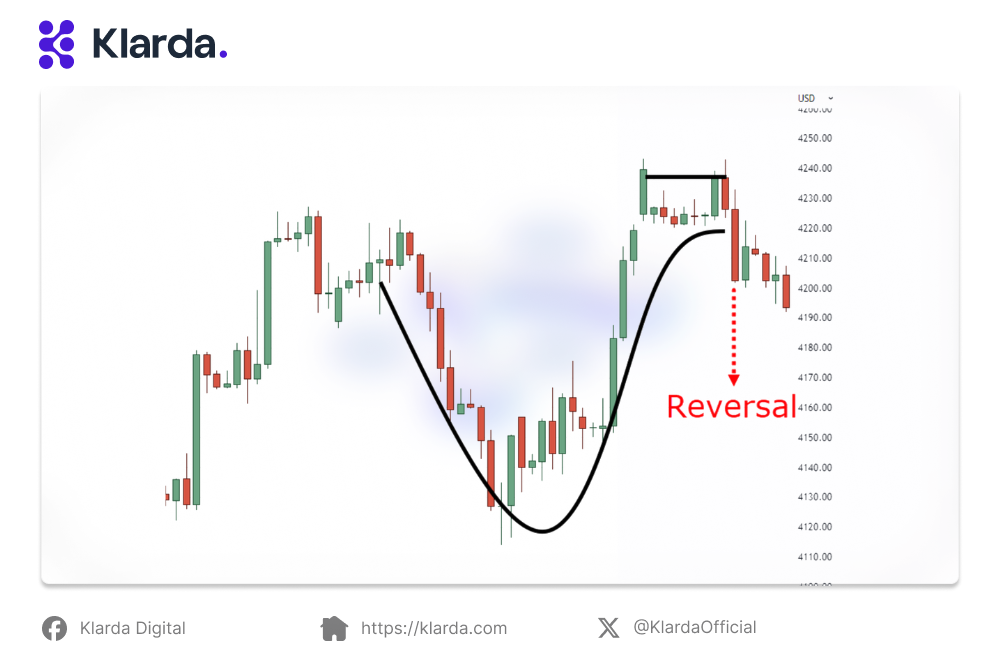
Reversal patterns signal an upcoming shift in the direction of the trend
TYPES OF REVERSAL CANDLESTICK PATTERNS CRYPTO
In Crypto, there are two main types of reversal candlestick patterns: Bullish Reversal and Bearish Reversal patterns.
Bullish Reversal candlestick patterns
This group of patterns signals that the market is in a distinct downtrend, where prices have reached the bottom of the trend and encountered a resistance force, causing a reversal upward. Here are three of the best candlestick reversal patterns:
Hammer candlestick pattern
The Hammer candlestick pattern signals a rejection of the market's downward trend. It indicates that sellers initially had control, pushing the price lower. However, as the downtrend bottoms out, strong buying pressure emerges, leading to a potential reversal with the closing price near the opening price.

The Hammer candlestick pattern indicates a refusal of the prevailing downward trend in the market
Dragonfly Doji candlestick pattern
The Dragonfly Doji, a Doji group candlestick pattern, is known for its effectiveness. Its unique shape, with a small body, signals that the opening and closing prices are identical. Representing market indecision, the pattern sees buyers gaining control as the session progresses, leading to an upward trend reversal with the session's highest price. The long shadow reflects strong buying pressure, with a longer shadow indicating a higher likelihood of a trend reversal.
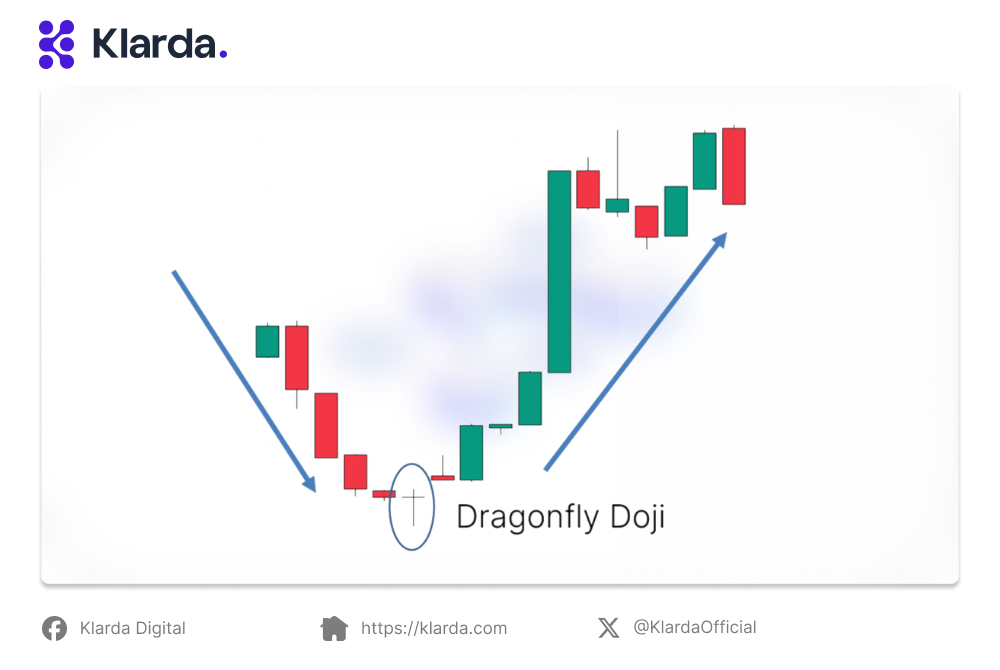
The Dragonfly Doji, characterized by a small body, signifies identical opening and closing prices.
Bullish Engulfing candlestick pattern
The Bullish Engulfing, one of strong reversal candlestick patterns, is most effective when it occurs at the end of a downtrend. If seen near a resistance level, its reversal signal is even stronger.
After a clear downtrend, aggressive buying halts the decline and propels prices upward. Following an upward candle, the confirmation of an upward trend comes when a second bullish candle appears, indicating the market's likely upward movement.
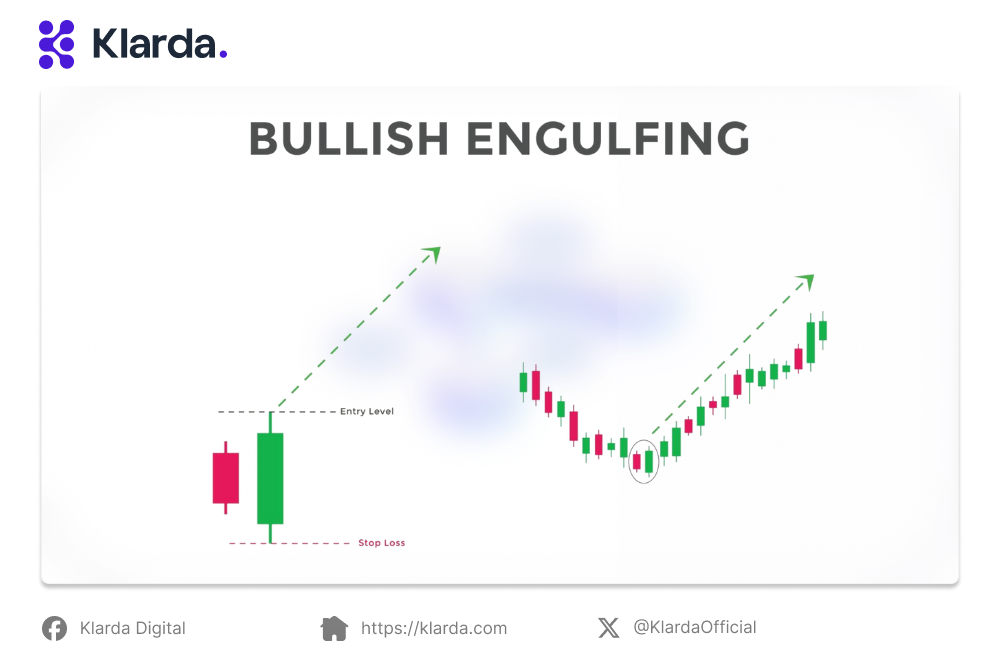
The Bullish Engulfing pattern is most potent when appearing at the conclusion of a downtrend.
Bearish Reversal candlestick patterns
Just as there are reversal patterns signaling an upward trend, there are, of course, patterns indicating a reversal to a downtrend. These patterns provide investors with insights into the market's intention to shift from an upward to a downward trend and identify the potential peak of that trend.
Shooting star candlestick pattern
The Shooting Star, a single candlestick pattern similar to the Doji, has a larger body where the opening and closing prices are nearly equal. Its long upper shadow signals buyer strength, but intense seller resistance forces the price back to the opening level. Confirmation of a reversal requires waiting for the next bearish candle to appear before considering a trade.
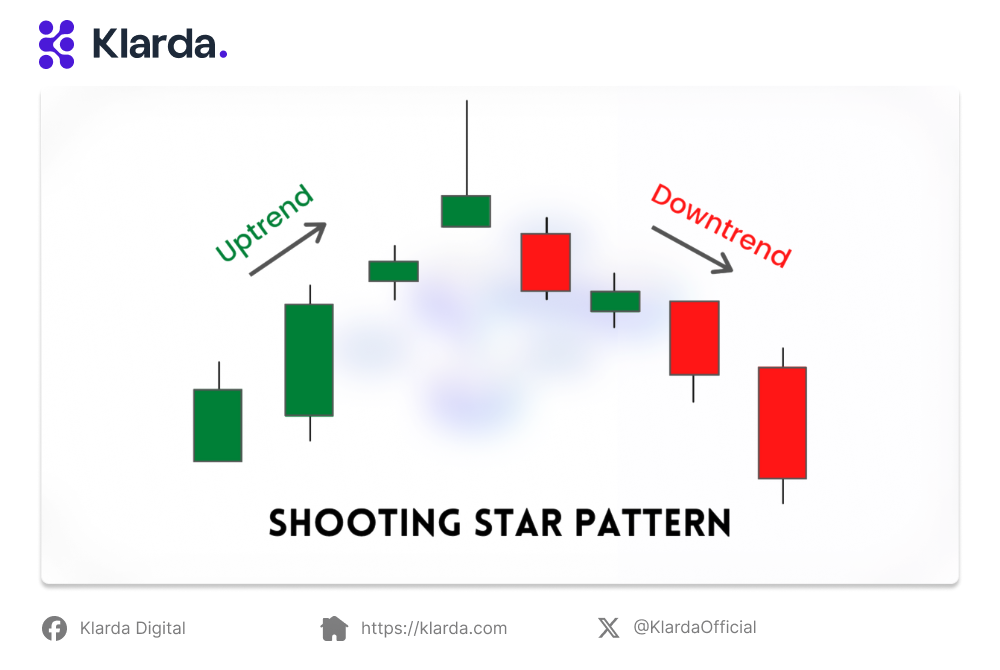
The Shooting Star exhibits a larger body with nearly equal opening and closing prices.
Gravestone Doji candlestick pattern
The Gravestone Doji is characterized by its opening price being equal to the closing price, positioned at the bottom of the candle.
When the market opens, the prior established upward trend continues strongly as buyers drive the price higher. However, the price reaches the trend's peak, and sellers intervene, causing a reversal back to the opening price level.
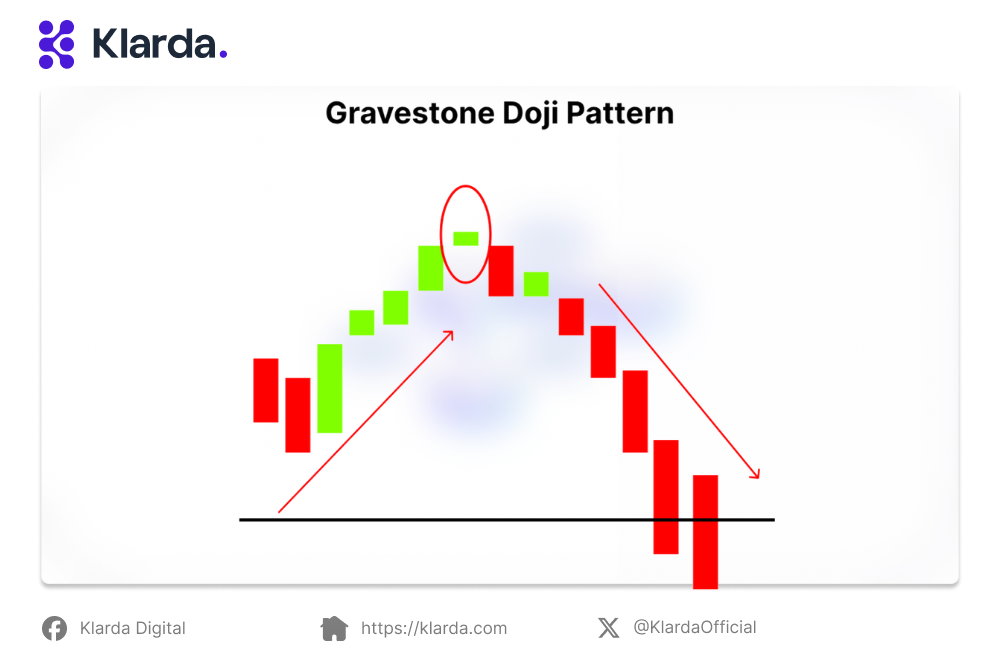
The Gravestone Doji features equal opening and closing prices, located at the bottom of the candle.
Evening Star candlestick pattern
The Evening Star pattern, among Japanese candlestick formations, is a robust reversal signal. It involves three candles: a strong bullish one, a smaller second candle suggesting a slowdown in buying momentum, and a bearish third candle indicating an attempt by sellers to control the market.
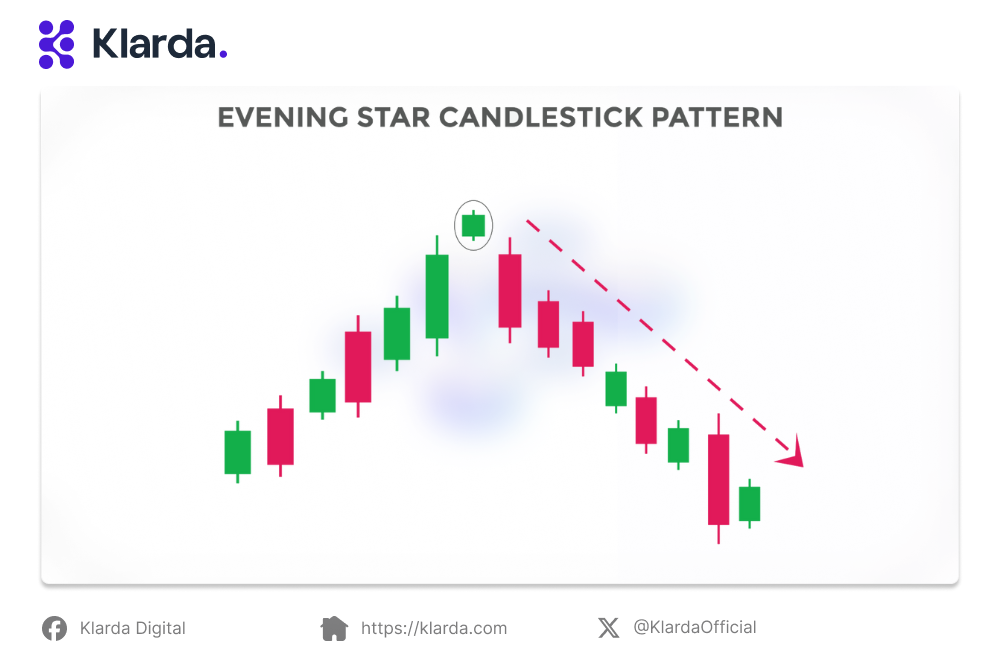
The Evening Star is a strong reversal signal pattern.
HOW TO USE REVERSAL CANDLESTICK PATTERN EFFECTIVELY?
When identifying a reversal candlestick pattern, traders need to assess the strength of the signal. If the signal is strong, there are typically three available options.
- Firstly, if the trader is in a position aligned with the current trend, they may exit all of their positions.
- Secondly, if the trader believes the reversal signal is not very strong, they may consider tightening their stop-loss level or closing a portion of their position to secure profits.
- Thirdly, if the market is ranging, the trader can use the signal to enter a new position in the opposite direction. For example, if a bullish reversal pattern emerges, they may consider opening a new bullish position.
Here are some guidelines for traders intending to initiate a new position in the direction of the trend change.
Entry Point
Most patterns consist of one, two, or three candles. Regardless of the number of candles, when the pattern completes, the trader can enter a position in the opposite direction as soon as the opening of the next candle.
This allows the trader to join the position immediately without requiring additional confirmation.
Stop-Loss
A stop-loss order is a precautionary order to close the position when the market moves against you. When you observe a bullish reversal, you'll want to place a stop-loss order below the low of the entire pattern. Conversely, when you see a bearish reversal, place your stop-loss order above the high of the entire pattern.
Take Profit
Take profit is another resting order, triggered when the market moves in your favor. Set the take profit level at least twice the distance from your entry to your stop-loss. Therefore, if your stop-loss level is set at 3%, consider setting the take profit level at 6% or higher.
In case you're looking for a suitable platform that provides information based on reversal candlestick patterns, Klarda is ready to welcome you. Klarda is a financial platform focused on delivering accurate, continuously updated, and transparent information for cryptocurrency asset owners on EVM networks.
Klarda Marketplace is a standout feature, offering users a comprehensive and continuously updated view of the cryptocurrency market. It's where you can find exactly what you need for efficient trading.
Moreover, beyond price charts and market news, Klarda provides essential resources for both fundamental and technical analysis, along with accurate trading signals for traders.
And that wraps up all the information we've explored about reversal candlestick patterns. We hope this information proves truly helpful for you, and we also hope you make informed decisions after understanding these details. However, we'd like to remind you that the information here is shared for informational purposes only, and there are no investment recommendations in this article.
Updated 7 months ago